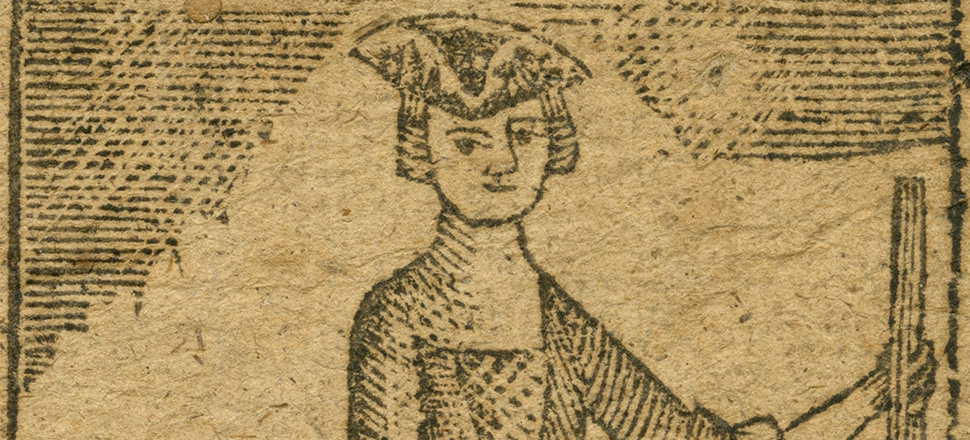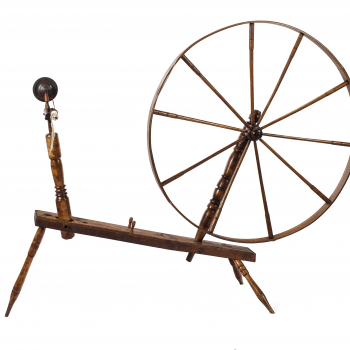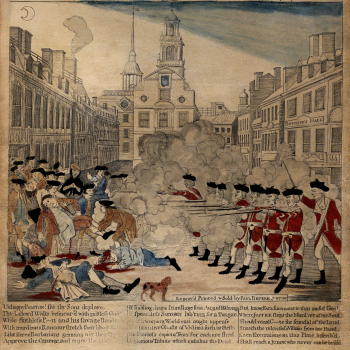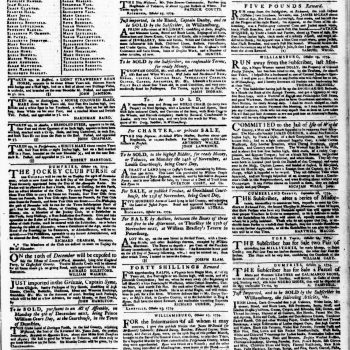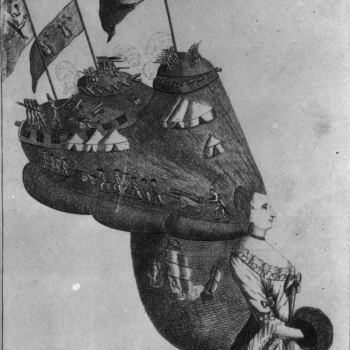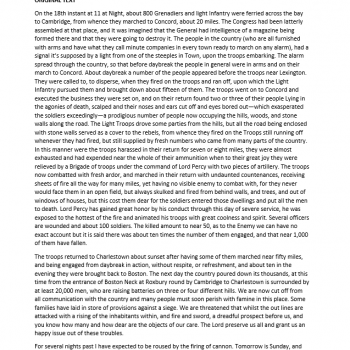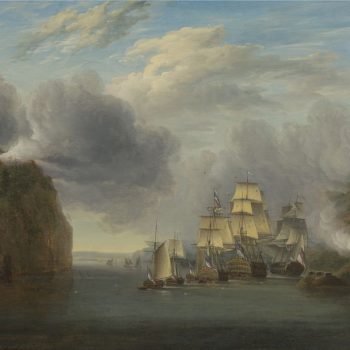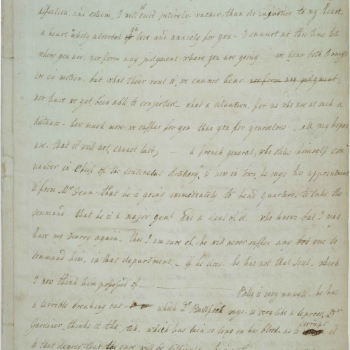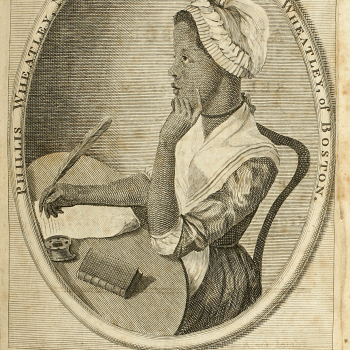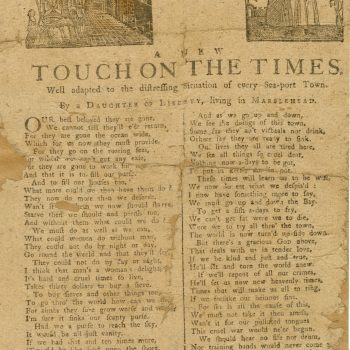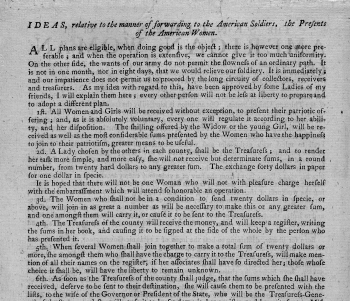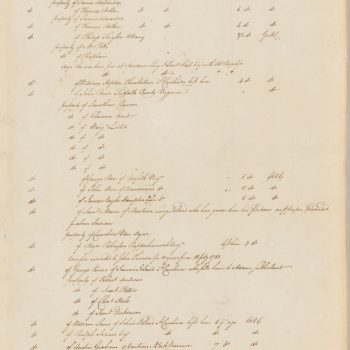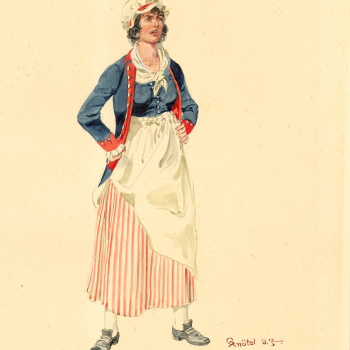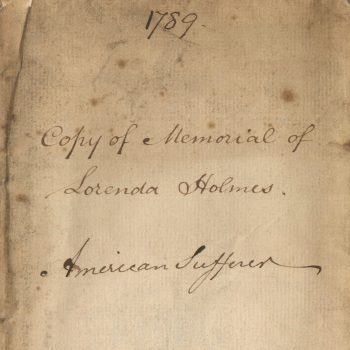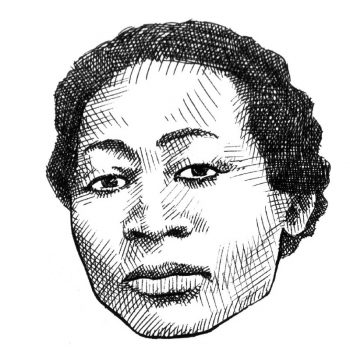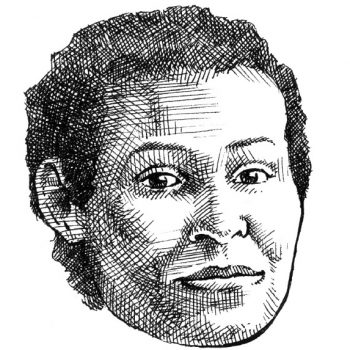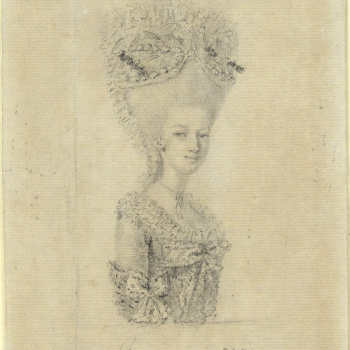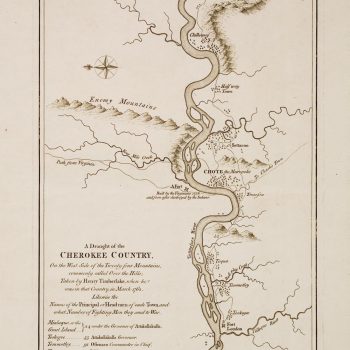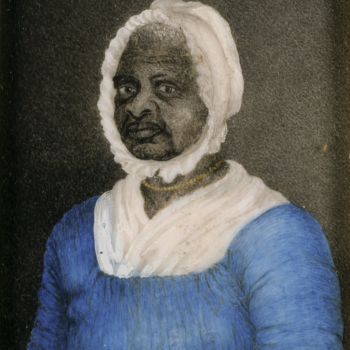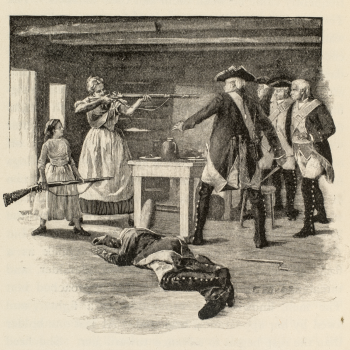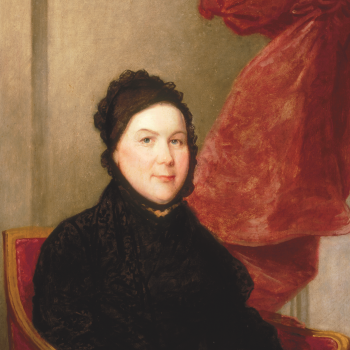Key Ideas
1. Women played critical roles in every part of the American Revolution, from the early protest through managing the aftermath of the war.
2. The experiences of women during the American Revolution varied widely based on race, class, age, and geographic region.
3. The story of the American Revolution cannot be properly understood without including the contributions and experiences of women.
Introduction
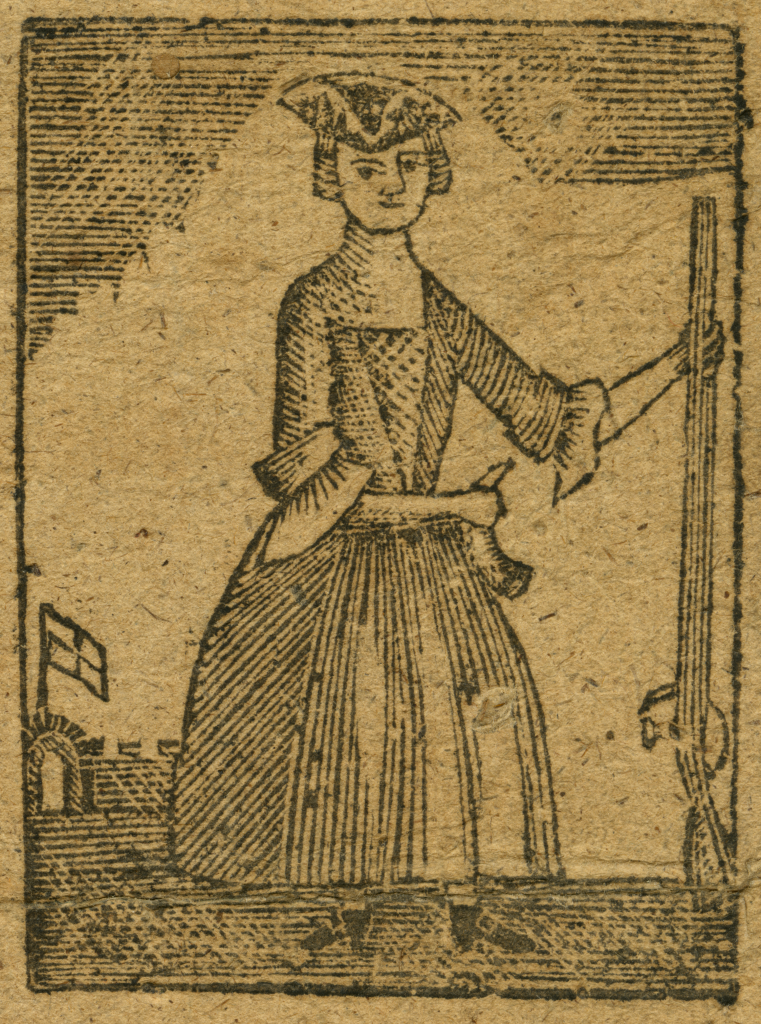
Woodcut detail from Molly Gutridge, A new touch on the times: Well adapted to the distressing situation of every sea-port town (Danvers, MA: Ezekiel Russell, 1779). New-York Historical Society Library.
Women and the American Revolution, 1750–1783
Though women in the English colonies were legally barredfrom nearly all forms of public and political life, they found numerous ways to engage in the political discourse that heated up in the years before the American Revolution.
Whether it was by producing homemade goods to avoid paying import taxes, writing scathing political satire, or publicly declaring a boycott of British goods, women were more than capable of bringing their considerable social and economic influence to bear in support of the Patriot cause. Their efforts were not always welcome, but they were effective.
The outbreak of the war in 1775 at the Battles of Lexington and Concord cleaved a fissure right through the heart of colonial society. Thousands of women suddenly found themselves living in a war zone, endured years of hardship, and many lost everything as the American and British Armies battled across the continent. Some women rose to the position of head of the household when their husbands departed for the war, while others became camp followers of the Continental Army and actively contributed to the success of the American enterprise. Loyalist women exploited their reputations as the “weaker sex” to run successful spy operations in New York, while in Philadelphia, Peggy Shippen Arnold covered her husband Benedict’s plotting with mundane shopping tasks. Without the efforts of women on both sides of the revolutionary divide, the war would have progressed very differently.
For more information about how definitions of “freedom” in the Revolutionary Era intersected with gender, watch the brief video below.
This video is from “Women Have Always Worked,” a free massive open online course produced in collaboration with Columbia University.
Section Essential Questions
1. How did women actively participate in the Revolutionary era?
2. How were women’s activities in this era circumscribed by social and legal limitations?
3. What effect did a woman’s race, class, or social differences have on her experience of the Revolutionary era?
4. Why are women’s stories critical to understanding the events of the American Revolution?
Resources
Life Stories
For more information and resources about the American Revolution, see our curriculum guide The Battle of Brooklyn.


